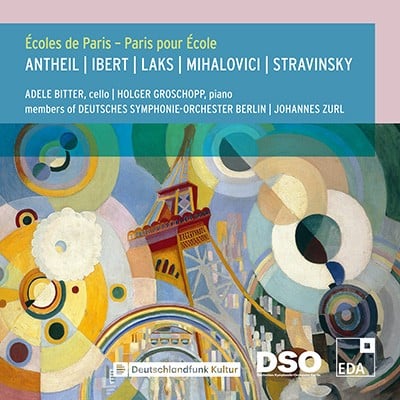1(=picc).1(=corA).2(II=bcl).2(II=dbn)-2.1.0.0-perc(1):timp/SD/BD/cyms/tamb/tgl/vib/xyl-pft
Abbreviations (PDF)
Bote & Bock
With his Concerto da Camera, Laks not only composed a “sum” of neoclassicism – the dominant style of the era of the 1920s and ’30s in Paris, which was formative for him – but also a manifesto for a music whose syntax and grammar corresponded with the listening experiences of a musically educated audience. Not only the three-movement structure – fast, slow, fast movement – traces back to the classical solo concerto, but also the individual movements make reference to the models of sonata form, song form, and sonata rondo established in Viennese classicism. The recourse reaches deep into the musical microstructure, from the design of the themes to the use of typical compositional “models” already formulated during the Baroque. Particularly ravishing is the virtuoso handling of these models in the last movement, whose constituent thematic material is based on the “Pachelbel bass” (fourth downward, second upward, fourth downward, etc.) and the descending scale in the melody whose foundation it forms. Indeed, one cannot suppress a smile at the witty “quarrel” that Laks compositionally provokes when he has the piano stubbornly respond to the major-key formula of the Pachelbel motif in the ensemble with its minor-key variant. And of course, this game is naturally flipped around in the recapitulation. This is musical rhetoric at its best. Laks gives the listener a means of orientation, in order to take him away from safe ground into unknown terrain. The thematic-harmonic material of the second movement, for example, is ultra-chromatic, quasi-permanent twelve-tone, without one experiencing the loss of a harmonic center – in the 1964 interview with Tadeusz Kaczynski, Laks describes this phenomenon with the term “tonicity” coined by Szymanowski as a third way between tonality and atonality/dodecaphony.
In this third movement of the concerto, Laks quotes from his Suite polonaise, which was composed in 1936 and dedicated to Szymanowski – it is a Polish folk-song melody. With this, Laks forges a bridge to the pre-war period: with the Suite polonaise for violin and piano, he represented the Polish section at the Festival of the International Society for New Music in 1937 – in addition to his successes as a composer for Polish sound film, a milestone on the way to the international music scene. Thus, in a later, compositionally fruitful phase of his life, he also reiterated his acknowledgment of the most important figure in Polish music in the first half of the twentieth century and, as a Parisian by choice, affirmed his roots in the music of his homeland. However, in addition to Szymanowski, also openly apparent is the formative influence of French aesthetics and, above all in the second movement, Laks’s admiration for Ravel’s refined neoclassicism.
Frank Harders-Wuthenow

Holger Groschopp, piano / Deutsches Symphonie-Orchester Berlin / Johannes Zurl
eda records EDA 048
